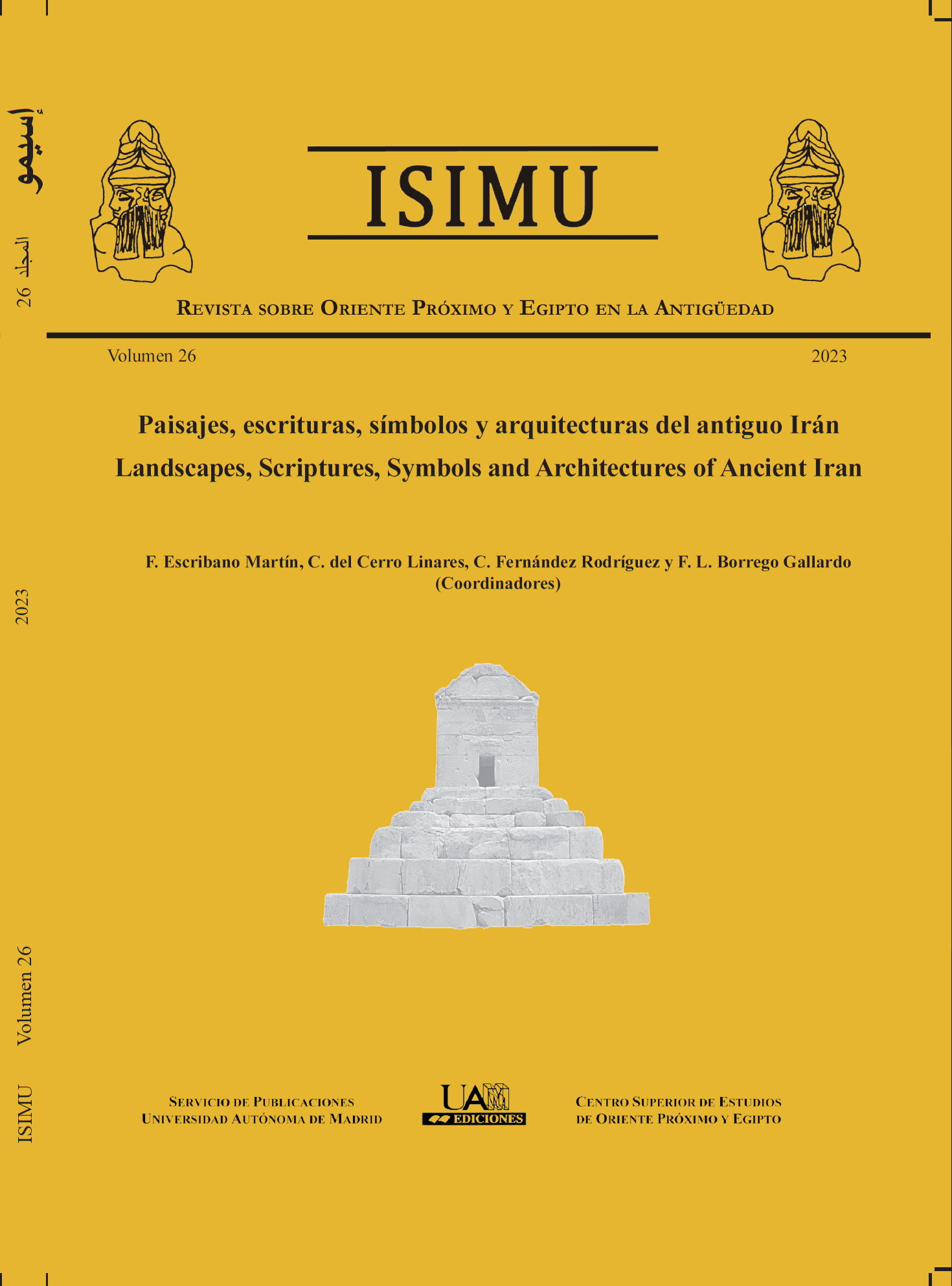
Keywords:
Hybrids, composite beings, aniconism
This work is licensed under a Creative Commons Attribution-NonCommercial 4.0 International License.
Abstract
What is the origin and functionality of hybrid creatures in pre-Islamic Iran if the Iranian religious scene has traditionally been considered aniconic. The imagery of the 4th and 3rd millennium BC responds to a common substratum that explains the survival of certain mythical archetypes and the cognitive process, allowing certain analogies between the Bonze Age and the Sassanid period.
Downloads
References
Agostini, D., 2019, “Half-human and Monstrous Races in Zoroastrian Tradition” en Journal of the American Oriental Society 139.4, pp. 805-819.
Aston, E., 2011, Mixanthrôpoi: Animal-human hybrid deities in Greek religion, Liège.
Boyce, M., 1975a, A History of Zoroastrianism. The Early Period, Leiden.
Boyce, M., 1975b, “Iconoclasm among the Zoroastrians” en Christianity, Judaism, and other Greco-Roman cults: studies for Morton Smith at sixty, pp. 93-111.
Compareti, M., 2009/2010, “Holy Animals” of Mazdeism in Iranian Arts: Ram, Eagle and Dog” en N?me-ye. Ir?n-e Bast?n 9/1-2, pp. 27-42.
Duchesne-Guillemin, J., 2002, “ANTHROPOMORPHISM” Encyclopædia Iranica, disponible en https://www.iranicaonline.org/articles/anthropomorphism
De Jong, A., 2015, “Going, going, gone! The fate of the demons in late Sasanian and early Islamic Zoroastrianism” en P. Swennen (ed.), Démons iraniens: Actes du colloque international organisé à l’Université de Liège les 5 et 6 février 2009 à l’occasion des 65 ans de Jean Kellens, pp. 163-170.
Ehrenberg, E., 2017, “ACHAEMENID VISUAL REPRESENTATIONS OF ROYAL FIGURES” Encyclopædia Iranica, disponible en http://www.iranicaonline.org/articles/achaemenid-visual-reps
Francfort, H-P., 1994, “The Central Asian dimension of the symbolic system in Bactria and Margiana”, Antiquity, 68 (259), pp. 406-418.
Heródoto 2000, Historias, C. Schrader (ed.), Madrid.
Lissner, I., 1961, Man, God and Magic, New York.
Maiden, B. E., 2020, Cognitive Science and Ancient Israelite Religion. New Perspectives on Texts, Artifacts, and Culture, Cambridge, pp. 133-176.
McMahon, A., 2022, “Composite Human-Animal figures in Early Urban Northern Mesopotamia: Shamans or Images of Resistance?” Oxford Journal of Archaeology, 41, pp. 23-251.
Pittman H., 2014, “Hybrid Imagery and Cultural Identity in the Bronze Age of Exchange: Halil River Basin and Sumer meet”, in C.C. Lamberg Karlovsky, B. Genito and B. Cerasetti (ed.), Margiana, My Life is like the Summer Rose. Papers in honor for Maurizio Tosi for his 70th Birthday, BAR International Series 2690, pp. 625-636.
Poinsot, D., 2022, “How to Create “Administrative” Iconographies? The Bestiary of the Sasanian Glyptic” Papers from the Institute of Archaeology 33 (1), pp. 1-20.
Porada, E., 1995, Man and Images in the Ancient Near East, London.
Shenkar, M., 2014, Intangible Spirits and Graven Images, Leiden.
Shenkar, M., 2015, “Rethinking Sasanian Iconoclasm”, Journal of the American Oriental Society, 135(3), pp. 471-498.
Wiggermann, F. A. M., 1994, ‘Mischwesen. A’ Reallexikon der Assyriologie und Vorderasiatischen Archäologie 8, pp. 222-244.
Winkelmann S., 2008, “Animali e mito nel Vicino Oriente Antico: un’analisi attraverso i sigilli” in P. Amiet, C.C. Lamberg Karlovski, G. Ligabue, G. Rossi Osmida (eds.) Animali e mito nel Vicino Oriente Antico, Trebaseleghe, pp. 40-58.
Wittkower, R., 1942, “Marvels of the East. A Study in the History of Monsters” Journal of the Warburg and Courtauld Institutes, vol. 5, pp. 159-197.